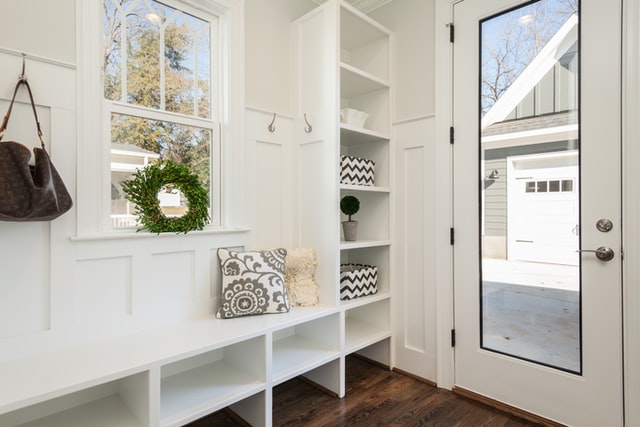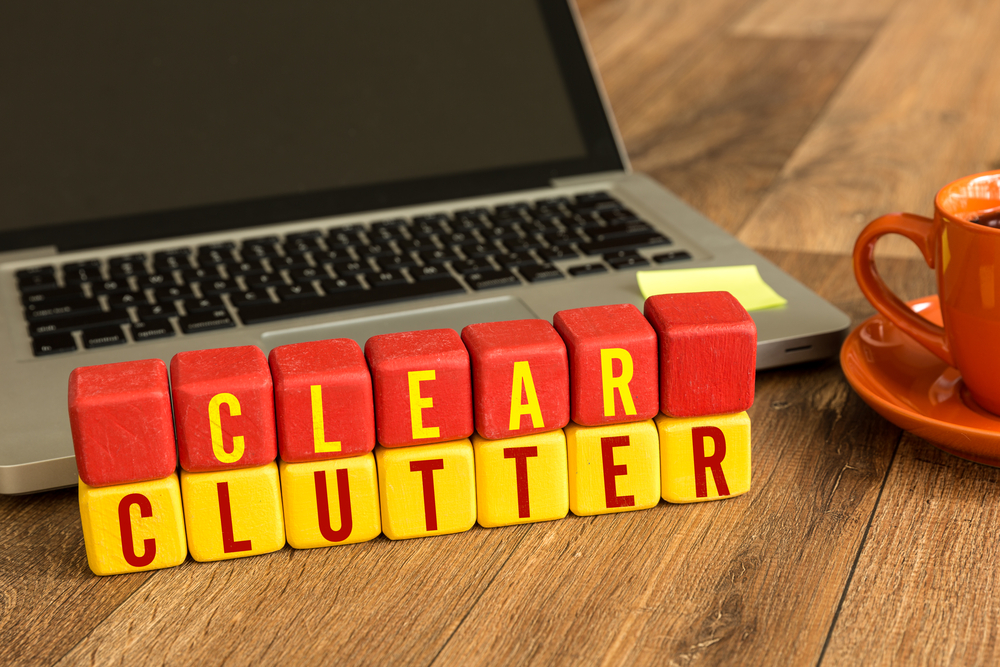Start Decluttering From One Of These 5 Areas
Are you feeling overwhelmed by the clutter all around your home? Do you want to start decluttering, but unsure about the best place to start?
If so, this post is for you!
In this article, I am sharing the 5 areas of your home that can be the starting point of your decluttering journey.
Since everyone has their own lifestyle and unique decluttering goal, it is important to find an approach that is best suited for your situation, so that you will stay motivated to complete the decluttering project.
5 areas to start decluttering your home
Once you’ve set your decluttering goal and found your motivation, it is time to begin.
I’ve provided five different areas from which to choose to help you determine the right starting point.
Take a look and see which one feels like the best fit for your current situation.
Choice #1: the Least Cluttered Area of your home
Decluttering is a skill you get better at the more you practice it.
The main purpose for starting at the least cluttered area of your home is to warm up and build your decluttering muscles.
If you have not decluttered your home for a while (or ever), you might need some trials and errors to develop a routine you are most comfortable with.
Since a least cluttered area is relatively quick and easy to declutter, it is an excellent place to get your feet wet.
Once completed, you’ll gain the confidence to keep going and tackle the more challenging areas.
Look around your house and identify the least cluttered area. It might be your guest bedroom closet, the art supplies drawer, or even the car glove compartment.
Choice #2: Area Where You Spend Most Of Your Time
If your decluttering goal is to gain back the space and enjoy the quality of living, start with the area of your home where you spend most of your time.
You can think of the kitchen, family room, and home office.
Since you spend most of your time there, you will instantly feel the difference once you finish clearing the clutter. You will experience the benefits right away and enjoy your home life much more.
And the good experience will motivate you to continue with your decluttering journey.
Choice #3: Area You Are Most Embarrassed About When Visitors Come
Do you get nervous whenever your doorbell unexpectedly rings?

We all have that one area in our home that we’re embarrassed about when visitors come over.
Start by identifying the area or rooms that cause you the most shame or embarrassment. It could be the entryway drop zone where out-of-season jackets and old shoes are strewn, or the kitchen counter that is covered with stacks of papers.
Whatever it is, starting with this area can be a great way to get rid of the embarrassment and make your home more presentable.
Once you’ve tackled that area, it will be much easier to invite people over and enjoy their company without feeling self-conscious about your mess.
Choice #4: Area Where You Don’t Feel Strongly About
This is the area with the stuff that doesn’t hold sentimental value to you. This is to help you make logical decisions about what to get rid of.
For example, if you love to read, deciding which books to declutter will be difficult, so bookshelves should NOT be the first area to start.
If you are passionate about cooking, you should stay away from the kitchen until you gain more decluttering experience. This way, you will be less sentimental and more logical when deciding which cooking tools and recipe books are to go.
Start decluttering in an area where you have neutral feelings, and you will make logical decisions without strong attachments or sentiments.

Once you are done with this area, you will build up your ‘decluttering muscles’ as well as the confidence, and gain motivation to move on to more challenging areas of your home.
Choice #5: Area That Gives You The Most Stress
This is probably the most difficult area to start decluttering, but it can also be the most rewarding.
When you declutter an area that’s been causing you stress, you’ll feel an immediate sense of relief. This can be a great motivator to keep going and declutter other areas of your home.
Maybe it’s the playroom overflowing with toys. Or the kitchen drawers that are full of duplicated utensils and tools. Or your overstuffed closet that makes getting dressed a timely and stressful process each morning.
The advantage of this option is that you’ll immediately remove a huge source of stress from your home and your life. You’ll free up a significant amount of time and energy when those sources of stress are gone.
The disadvantage of this method is sometimes it can be overwhelming to tackle a difficult area before you’ve had a chance to build up your decluttering muscles!
But First, set your goal
Now that you know the 5 options for the starting point, are you eager to begin your decluttering journey?
But wait! Before you dive in, ask yourself the following questions:
What is your most important objective for decluttering? Are you looking to free up a certain area so your child has more room to play? Do you want your home to look nice when family members come to visit next holiday season? Do you wish to spend less time taking care of ‘stuff’, so you can enjoy doing things you love? Or do you simply want to create a habit to declutter on a regular basis?
When you set the goal for your decluttering project, you will be focused and less likely to give up when you encounter difficult challenges.
Conclusion
To recap, the 5 areas that you can start decluttering are:
- The least cluttered
- Most embarrassed to let visitors see
- Where you spend most of your time at
- Gives you the most stress
- You don’t have strong feelings about
These are just a few of the many different places you can start decluttering your home. The important thing is to just get started somewhere. Once you get the ball rolling, you’ll be surprised at how quickly the rest of your house starts to come together.
There is no right or wrong answer when deciding where to start decluttering your home. It ultimately comes down to figuring out what will work best for you and your situation.
I hope this article is helpful to you!






